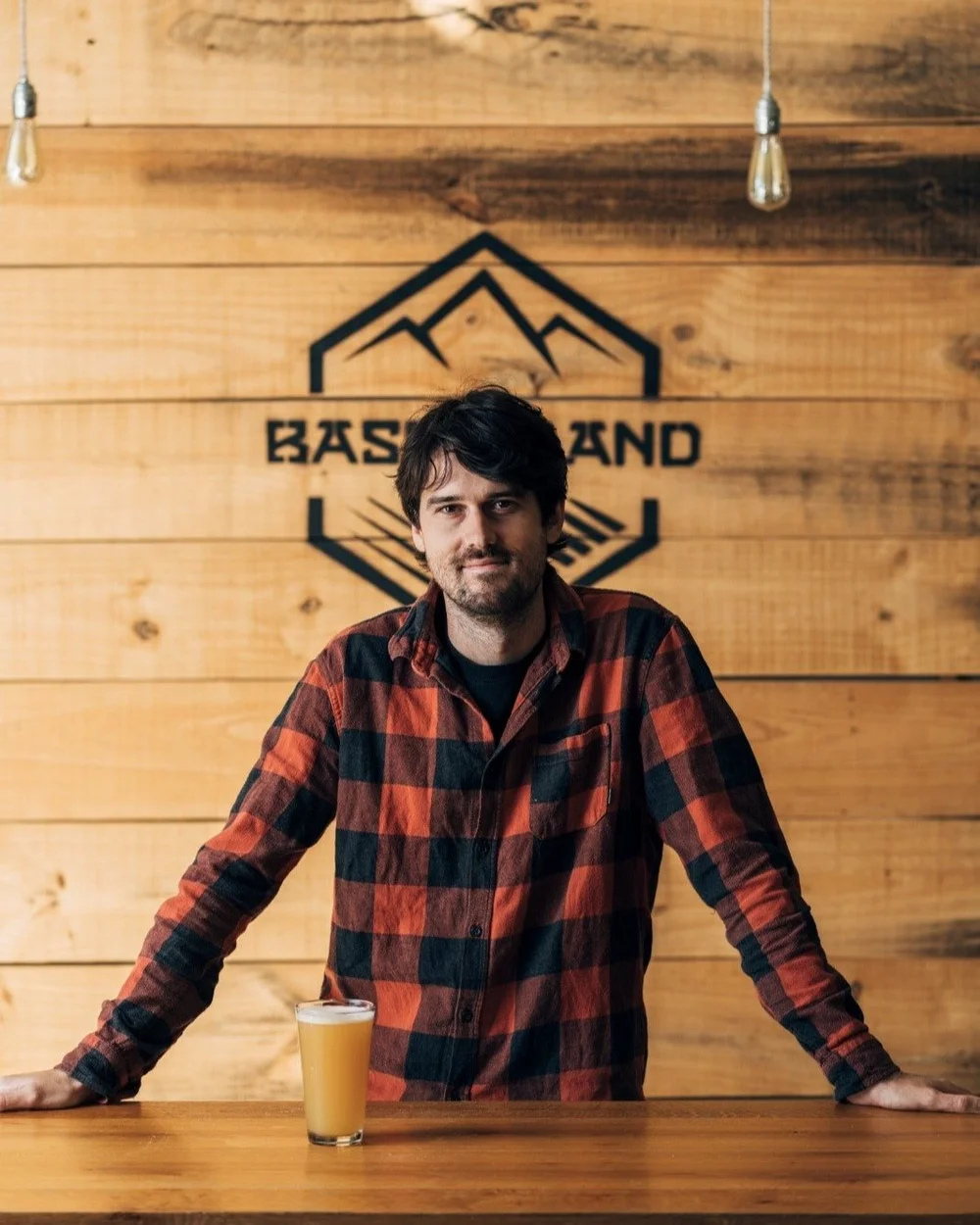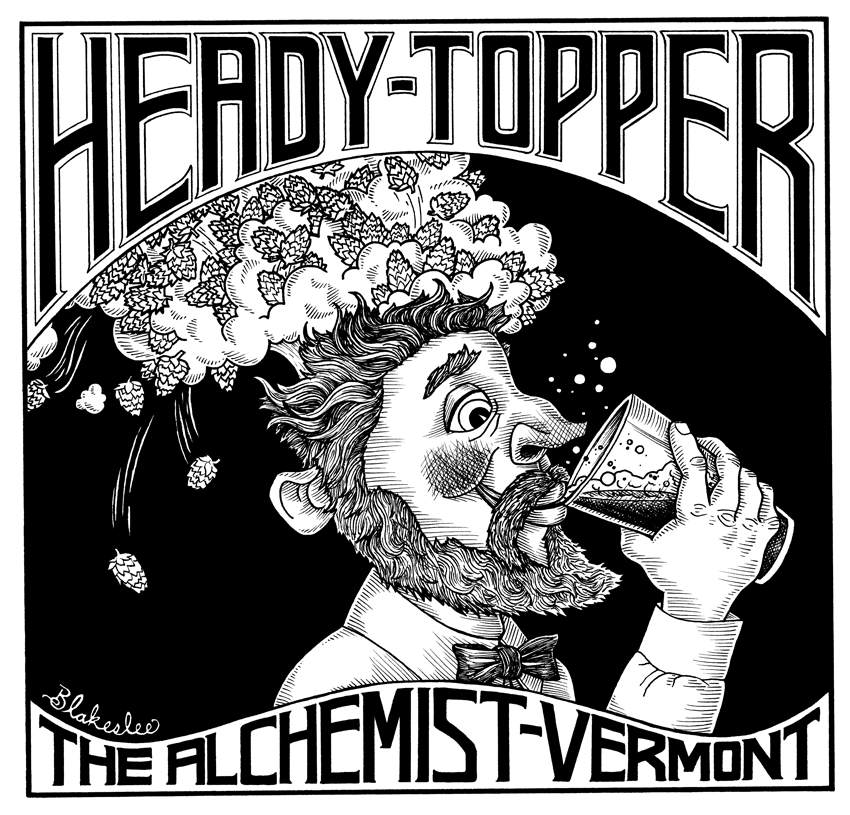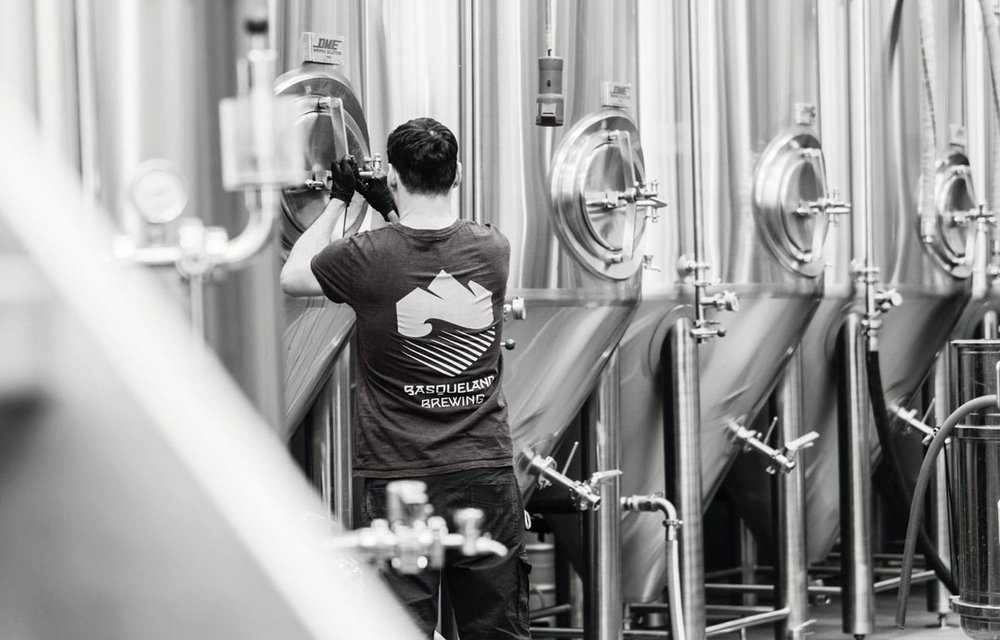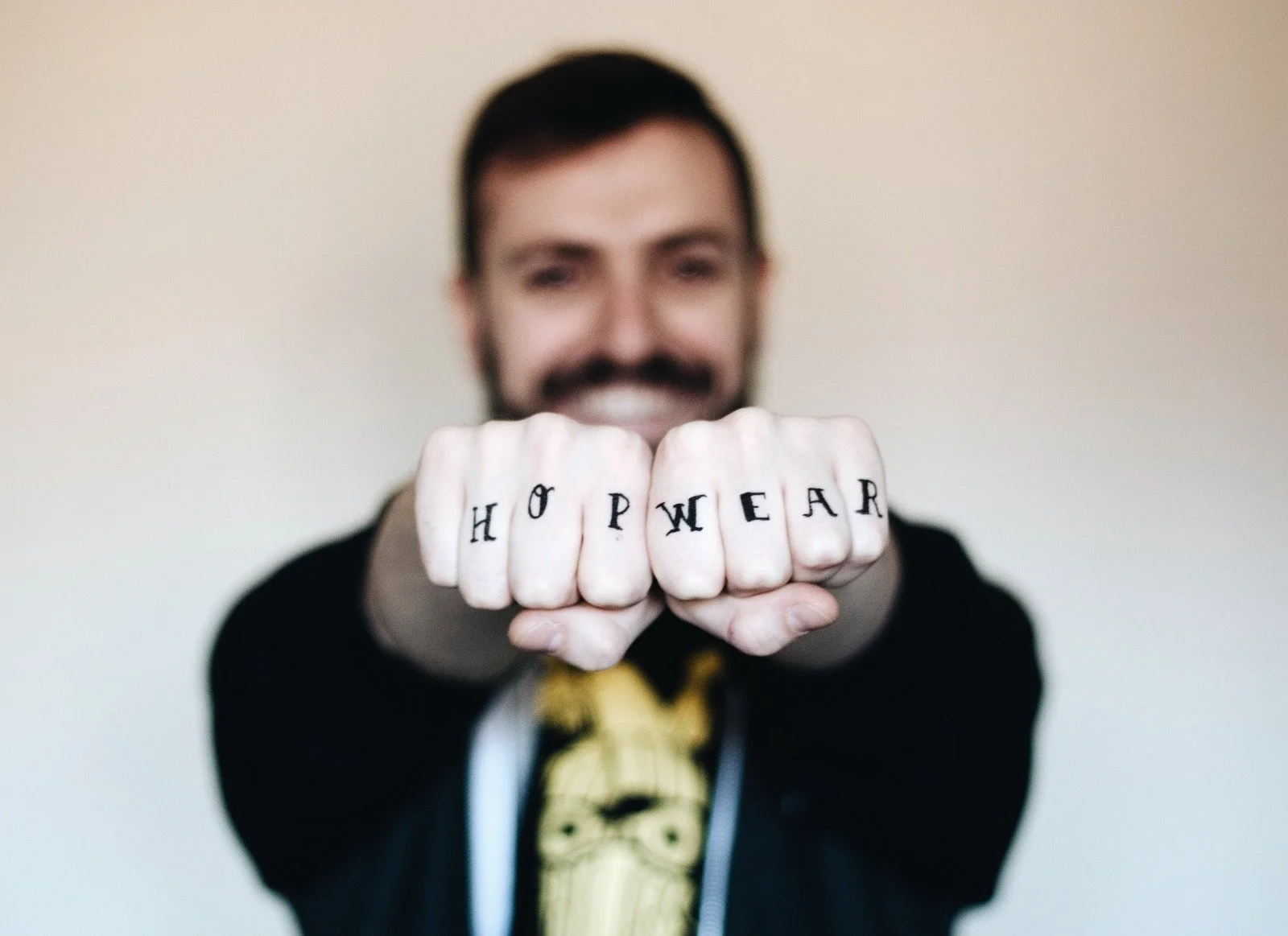To describe what a Hazy IPA is, the first thing we should do is pour our beer and observe it through the glass. See nothing in there? Then something�s right, because as its name suggests, it is a style...

Photo � Basqueland Brewing
VERSI�N EN ESPA�OL AQU�WHAT IS A HAZY IPA? THE ORIGINS OF THE STYLE
To describe what a Hazy IPA is, the first thing we should do is pour our beer and observe it through the glass. See nothing in there? Then something�s right, because as its name suggests, it is a style that is mainly characterized - among other aspects that we will look into in this article - by its opacity and haziness.

The origin of this variation of the IPA style that has been conquering the world of craft beer for years can be found in Vermont, United States, the day that the legendary local brewery The Alchemist decided to can and launch a delicious unfiltered, unpasteurized double IPA called Heady Topper.
After years in which it could only be consumed in the Waterbury brewpub, a tragedy occurred that changed the course of history. In 2011 Hurricane Katrina destroyed the premises, and that's when its founders - John and JenKimmich - decided to invest in a cannery and start selling their beers.
In a year, they went from the 400 barrels they brewed for the brewpub, to 1,500 barrels, and in this case just Heady Topper. The next year they were already at 9,000. And the rest is history.�(source: �The Story of Heady Topper, America�s Most Loved Craft Beer�).
WE TALK WITH �SCAR SAENZ, HEAD BREWER AT BASQUELAND BREWING
In order to find out more about this revolutionary and tremendously popular style of beer in the field of craft beer, and which we could almost define as a cultural phenomenon, we have spoken with a true expert. I am referring to �scar Saenz, Head Brewer at the award-winning brewery from Hernani, Gipuzkoa; Basqueland Brewing, one of the greatest examples of brewing Hazy IPAs.
But first, we need to get to know the history of Basqueland a little better.
It all started six years ago when Kevin Patricio and Ben Rozzi, two young Americans living in San Sebasti�n, decided to make their dream come true: to create a craft beer brewery in their adoptive home. The objective was clear: to provide the fabulous gastronomy of the Basque Country with beers that were on a par with the culinary products. With that purpose, they inaugurated the Hernani brewery.
Since then, Basqueland Brewing has been steadily growing and gaining popularity. The quality of their elaborations has led them to be a benchmark not only on the national scene, but also in Europe, and exporting their beers to several different countries. They are currently in a process of expansion, making the brewery triple its space and reaching a production capacity of 1,100,000 liters per year once the new fermenters arrive.
Much of the reason for this success is �scar, who began his adventure in the world of beer homebrewing together with some friends. In 2010 he left his career in research and moved to Scotland, where he started working for Brewdog: �I started as a brewer, but when we moved to a bigger brewery, I focused on the development of the quality department and the laboratory�. Four years later, "I decided to change the scene and the project, to focus more on production at the Camden Town factory in London, where we focused our products on lager-style beers."
In 2017 he returned, and that's when he started working for Basqueland. First as lead brewer, and at the end of 2018, as production manager: �My work is mainly based on creating recipes, optimizing production processes, planning and purchasing, leading a team of ten people. During the last year I have also been designing the expansion of the factory to reach the estimated 1.2 million liters in 2023�.
Basqueland Brewing currently holds the recognition for the best brewer in 2021 awarded by the prestigious and international Barcelona Beer Challenge, and also the current winner of the Campeonato Nacional de cervezas. Thank you Oscar for sharing your knowledge and participating in C R A F T E D!

Photo � Basqueland Brewing
�.- All Neipas are (or should be) cloudy, but not all IPAs with a hazy appearance are Neipas. Also, now that according to the 2021 edition of the BJCP Guide the New England IPA style is renamed Hazy IPA, it can be even more difficult to differentiate between one and the other. Can you explain to us, in broad strokes, what differentiates a Neipa (now Hazy IPA) from an IPA with a cloudy appearance?
�scar: Broadly speaking, NEIPAs are very cloudy beers, yellow in color and with very little bitterness, a very large load of hops in the dry hopping, and full-bodied due to the addition of oats.
The impression when drinking it has to be that of a very aromatic beer, normally fruity, but nevertheless with a very soft and dense palate. The key to the style is that it has to be a very tasty beer, almost like a juice. The carbonation of the style is normally lower than in others, to favor that sensation of roundness.
It's all up to the brewer, but a cloudy-looking IPA doesn't have to meet these requirements. There are many West Coast on the market that are cloudy, but they have nothing to do with a NEIPA.
�.- If we talk about Hazy IPAs in general, and the process of its elaboration in comparison for example with that of the West Coast IPAs that you just mentioned, could you tell us what factors, techniques and/or ingredients are those that contribute to that haziness so characteristic of the first ones?
�scar: They are totally different styles, and therefore, we use different ingredients and techniques to obtain different results. In West Coast we use a higher amount of hops at the beginning of the boil to get more bitterness, while in Hazy all that hop load goes into the whirlpool.
A key technique in my opinion to nail the Hazy style is to use a lot of modern hops and limit the contact time during dry hopping to a couple of days, thus obtaining a much fruitier and cleaner aroma. Also important is the use of oats in the production of the wort, and the selection of the yeast with which we are going to ferment that wort. I like to use yeasts with character, which add esters to the beer, creating a synergy with the hops that we will add later in the dry hop.
�.- On occasion I have read that there are brewers who try to recreate the water profile of areas such as Vermont (state) or New England (region) to make their Hazy IPAs or Pale Ales. Do you think that, in order to obtain the desired texture and balance, in addition to the type of yeast, the hops used in dry-hopping or the type of grain, the profile of the water used influences the final result? In the event that this is the case, can you tell us which water profile works best according to your experience?
�scar: I have never been in favor of replicating specific water profiles. I think it is more important to know what we want to achieve at an organoleptic level and to make sure that the yeast is going to have all the necessary micronutrients and salts.
In this case we have to avoid the astringency that the use of so many hops can cause and in turn increase the sensation of density in the mouth. At Basqueland we add chlorides to our water (we have very soft water) to obtain about 200 ppm and we limit sulfates to between 10 and 100 ppm depending on each recipe.
�.- In the case of Hazy IPAs, the sensitivity when they come into contact with oxygen is much higher than that of other styles. What would be your advice to avoid unwanted oxidation? And, on the other hand, what period of time from canning do you think is the ideal time to consume this type of beers, if what we want is to enjoy them at their best?
�scar: Being a style in which hops are the main protagonist, avoiding oxidation is crucial. In 2017 we invested in a dissolved oxygen meter, and I think it was the best investment we have ever made. It allows us to improve our process and notably reduce that oxygen intake both in the tank and in our packaging.
It is true that they are delicate beers, so it is best to drink them as soon as possible. That said, the breweries invest a lot in trying to make the product last as long as possible, so you can find beers months from packaging that are still in very good condition and faithful to what the brewer wanted to brew.
�.- Recently more and more beers are coming onto the market that carry the so-called Cryo Hops (dry lupulin powder), and many brewers highlight their efficiency and adaptability when it comes to making beer. Could you explain to us what benefits, in your opinion, its use offers compared to pellets or cones? And on the other hand, what is the best time to add them?
�scar: These hop products, called cryo, have advantages and disadvantages. On the one hand, they contain a higher amount of essential oils and are somewhat different from the T90 of the same variety, so they are interesting to obtain different profiles and beers with more layers of flavor.
But on the other hand, using 100% of these hops tends to give us beers that are one-dimensional, and that lack a certain aromatic complexity. This is due to the fact that during the processing of these hops the amount of vegetable matter has been reduced, which also contributes to the beer.
In my case, I get very good results using between 5 and 10% cryo hops in recipes and I usually use it both in whirlpool and dry hopping.
�.- On some occasions, �less conventional� ingredients are used, such as lactose, fruit purees or flour to obtain haziness. Can you tell us what you think of these practices, if you think they are positive or if, on the contrary, you think they distort what this type of beers should really represent?
�scar: �I think that everything is valid if the intention is to contribute something more than haziness. Lactose is interesting because of the body it gives us and fruit purees give a lot of play when combined with hops.
The possibilities are almost endless. I don't know anyone who has used flour, but you can achieve the same result without having to use it.
�.- Finally, of all the beers you have brewed to date, which one are you most proud of?
�scar: From our Hazy profile, I think DIPAs are the best thing we bring to the market. I am especially proud of our fifth anniversary beer, �Years and Years�.











